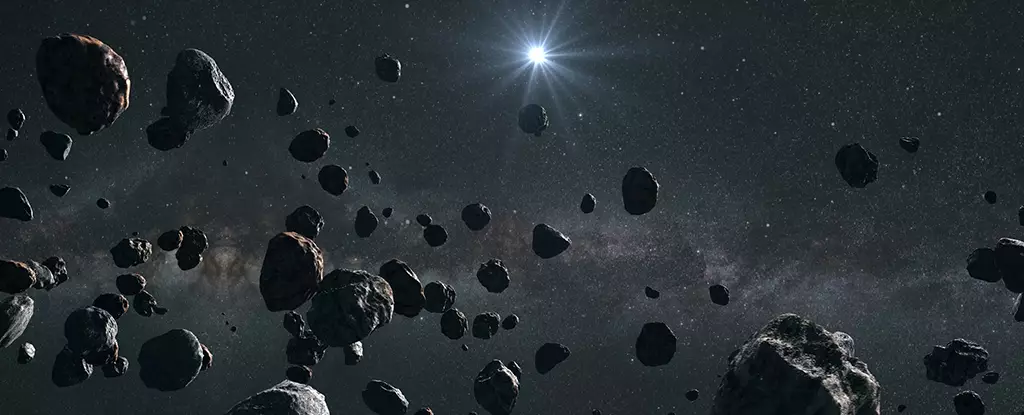A recent breakthrough in scanning telescope images for faint signs of rock beyond Pluto has led to an intriguing discovery about our Solar System. For decades, astronomers believed that the Kuiper Belt, a field of icy boulders extending 48 times the distance between Earth and the Sun, suddenly thinned out. However, new evidence suggests that our Solar System’s disc of material reaches much further into interstellar space than previously thought. This article delves into the research conducted by a team of astronomers and the implications of their findings.
Led by Canada’s Herzberg Astronomy and Astrophysics Research Centre, the team of astronomers embarked on a mission to identify potential targets for the New Horizons Probe as it ventured towards the outer reaches of our Solar System. The New Horizons Probe had already provided close-up images of Pluto and was now searching for new objects of interest as it approached a distance of nearly 60 AU from the Sun.
Due to the limited amount of light in the Solar System’s edge, traditional methods of observation were ineffective for detecting objects. To overcome this challenge, astronomers relied on a technique called shift-stacking. By taking multiple images at different times and aligning them, the stacked image could enhance the visibility of dimly lit objects. However, this method required extensive human effort and trial and error to locate hidden objects.
To streamline the process, the research team incorporated machine learning into their analysis. They trained a neural network using computer-generated objects inserted into telescope imagery. This neural network was then applied to data collected by the Subaru Telescope on Mauna Kea in Hawaii. The results were impressive, with the machine learning technique identifying twice as many Kuiper Belt Objects compared to a human search of the same data.
The increased detection of Kuiper Belt Objects through machine learning indicated a rise in material density at a distance of 60 to 80 AU along the trajectory of New Horizons. This finding helps explain the anomalous glow observed by both the probe and the Hubble Space Telescope. The additional debris adds to the reflective dust in the outer Solar System, contributing to the observed phenomenon.
While these findings are significant, questions arise regarding their generalizability. Other surveys of different sky patches have failed to detect abundant orbiting objects, leading to the speculation of potential biases or unique characteristics along New Horizons’ path. Furthermore, the machine learning technique used in this study may have its own limitations that need to be addressed and refined.
Although preliminary, the results suggest that our Solar System may have two distinct rings of icy material, separated by a gap at around 50 AU. The first ring consists of the familiar Kuiper Belt, while the second extends as far from Pluto as Pluto is from Earth. The existence of such a gap poses an interesting mystery that entices further exploration.
The recent discovery made by the team of astronomers reveals new insights into the extent of our Solar System’s disc of material. By introducing machine learning into the search for Kuiper Belt Objects, they were able to overcome the limitations of traditional observation techniques. This discovery opens the door to further investigations and potentially unravels the mysteries surrounding the composition and structure of our Solar System.



Leave a Reply